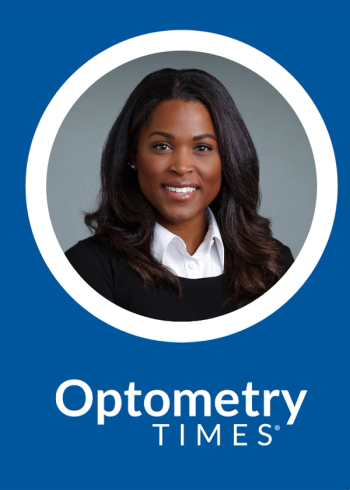
The challenges of treating a loved one
But my wife was referring to the vitreous in her right eye which started detaching a few days prior, threatening to unravel both her retina and our long-laid trip plans.
When my cellphone gently buzzed as I sat in a lecture at the recent American Academy of Optometry meeting in New Orleans, I jumped like someone had just stuck me with a needle. I glanced at its retina display and read a cryptic text from my wife: “On ceiling of Voodoo Lounge. Reminds me of my eye last Sunday!”
“Oh my, it’s not even 10 o’clock in the morning. What has she gotten herself into now?” I fretted.
I tapped and pinched the attached picture, enlarging what appeared to be wine-red, dendritic splotches of paint flung against a cream, popcorn ceiling (see image above). It could have been a tinted Rorschach inkblot, blood splatter (that was the intent), or the early makings of a gravity defying, Jackson Pollack painting.
More from Dr. Brown:
A snake and then splatter
But my wife was referring to the vitreous in her right eye which started detaching a few days prior, threatening to unravel both her retina and our long-laid trip plans.
She had been driving that day and nearly stomped on the brakes when she saw, in her words, “a snake and then splatter.” That was followed by-you guessed it-“flashes of light.” When I heard her description over the phone, the first differential that popped into my head was a hemorrhagic posterior vitreous detachment (PVD) with a high risk of a retinal tear.
I told her to meet me at my office. The life of an OD’s spouse is a humble one, but it does come with certain perks such as free refractions, bottomless artificial tears, and a dilated fundus exam with extended ophthalmoscopy within 30 minutes of the onset of symptoms.
After combing every square millimeter of her retina with every lens in my arsenal, I was satisfied that there was no discernable blood or retinal break. There was a long string of condensed collagen fibrils hanging like a bridal veil in mid-cavity, and the peripheral retina was flat and smooth. There was no discernible Weiss Ring, however, so I knew the detachment was in evolution and would likely continue for days and perhaps even weeks ahead.
Second guessing
With any other patient, this would have been a fastball smack dab in the middle of my wheelhouse, and I would have been the exemplar of cool, calm professionalism. I tried my best to be the same with her, but underneath, I found myself second-guessing my initial impressions.
By the following morning, her photopsia had increased, and I was starting to question whether or not I should even go to New Orleans, much less her accompany me. After all, we learned the hard way
Related:
I knew all the odds and statistics by heart-and they were in her favor. But when it comes to treating a loved one, there’s only a sliver of space between evidence-based and emotion-based medicine, and I was in a tight spot. I sensed I needed a second opinion, a sidewalk consult with a trusted colleague who would give me an objective viewpoint and feel free to call out my BS.
The sage advice of Dr. Ernie Bowling
So, I called a friend. In this case, it was former classmate and Optometry Times Chief Optometric Editor Dr. Ernie Bowling. After listening to the scenario, he gave his usual sage advice: “Mike, just let her live her life.”
So we headed south toward The Big Easy. My wife is the Queen of Trip Planning and attacks a “to-see” list with the same amped-up intensity as she devours the powdery, freshly fried beignets at Café Du Monde. I pleaded with her, “Please promise me you’ll go half-speed, and try not to bounce around so much!”
I don’t always incessantly text and quiz patients about their symptoms in the days following a PVD. Nor am I accustomed to sliding over and spooning one in bed in the wee hours of the morning and whispering in her ear, “Are you still seeing fireworks?” But when I do, it means I really care.
“Stop worrying so much,” she murmured beneath the pillow. “If something happens, what better place to be than at an optometrist convention?” She sighed, no doubt rolling her eyes behind her closed lids, and dozed off.
When I re-examined her after we got back, the PVD looked more complete, and the photopsia was slowing down. She still sees an occasional spark, though, especially when she moves her eye sharply in the dark, an enduring, entoptic token of recent intraocular events.
But she survived the trip, the dark, touristy juju of Voodoo Lounge-and even me, The Grand Optometric Inquisitor-with her retina intact and her spirits lifted by the sights, sounds, and savory cuisine of New Orleans. And all because a good friend and colleague cared enough to tell me the truth I needed to hear.
Newsletter
Want more insights like this? Subscribe to Optometry Times and get clinical pearls and practice tips delivered straight to your inbox.



















































.png)


